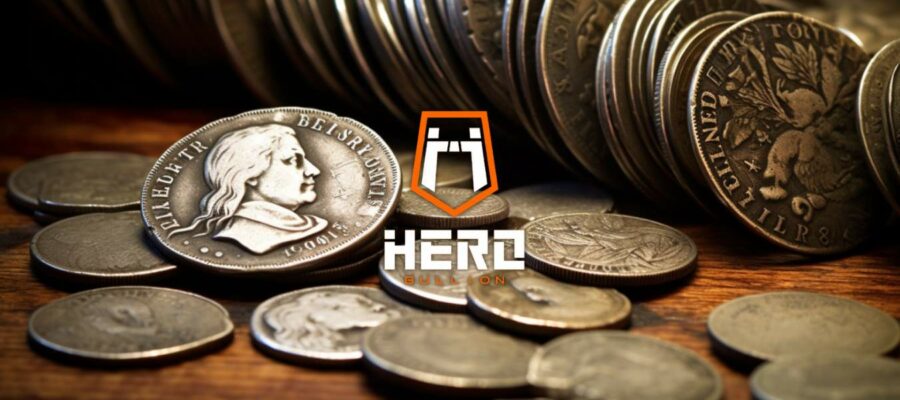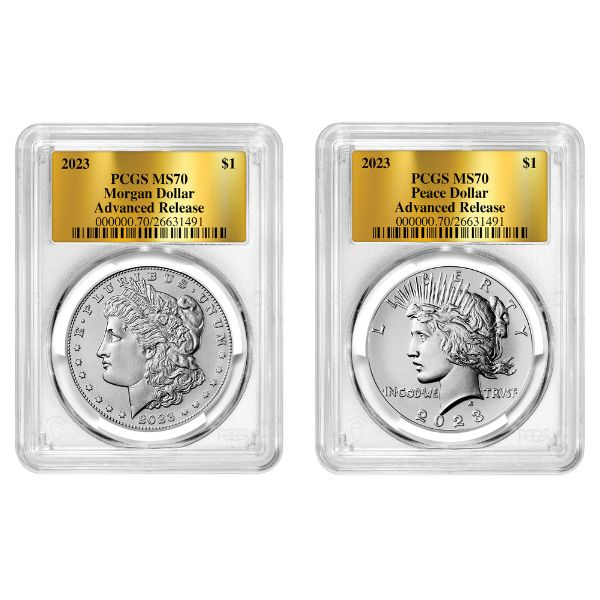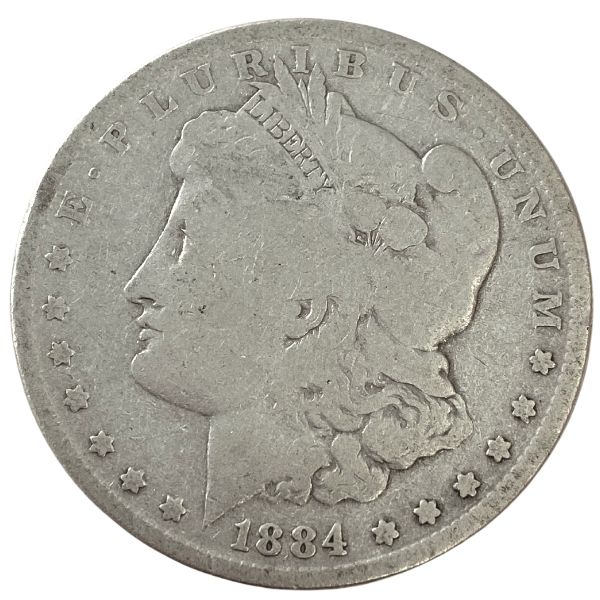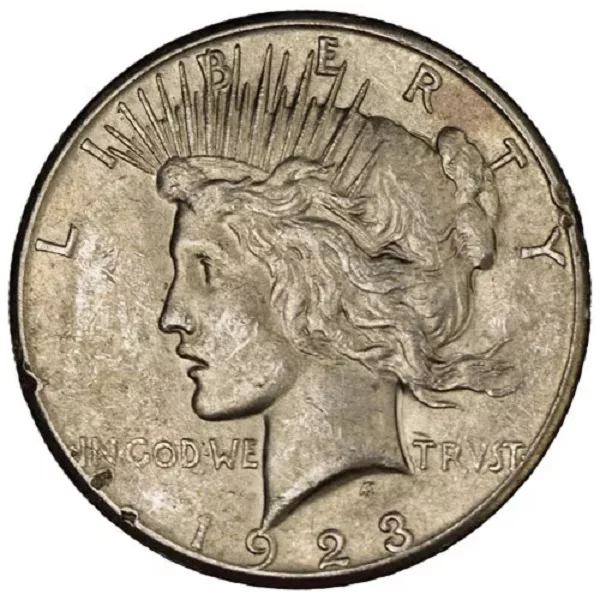What Are Lowball Coins – And Are They a Good Investment?

For rare coin collectors, condition is everything. Because so few coins avoid circulation, finding a rare silver dollar with a perfect PCGS grade is nearly impossible. Coins from low mintage years preserved in MS70 condition can cost thousands of dollars – or more!
But there’s another type of graded rare coin that can, in some cases, be worth even more to the right collectors. Can you guess what it is?
Today, we’re taking a look at lowball coins. What are lowball coins? In short, lowball coins are coins given the exceptionally rare grade of PO01. These coins have been circulated and worn down until they’re completely flat, but their dates and other relevant markings are still clearly visible.
In this guide, we’ll explore what lowball coins are – and why they’ve become a popular way to invest in numismatic coins from early American history.
Understanding Coin Grading
Coin grading is an important part of buying and selling bullion coins. Modern bullion coins like the American Silver Eagle are almost exclusively sold in BU condition. BU, or Brilliant Uncirculated, coins haven’t been handled by the general public and are completely perfect. In other words, BU coins look exactly the same as they did when the mint first sold them.
Most silver dollars and other circulated coins aren’t sold in BU condition. Instead, these coins are usually graded by a professional grading company, such as PCGS. We’ll cover the full range of different grades a coin can receive below.
AU, Unc., MS, and BU Coins – The Lowdown on Coin Grading
If a coin has been handled by the public (circulated), then it cannot be considered uncirculated, MS, or BU. These three coin condition categories are reserved only for coins that have never been used for actual commerce.
Coins are graded on a numerical scale, regardless of whether they’re circulated or uncirculated. Therefore, coin grades are usually stated using two letters and then a number. It’s not uncommon to see uncirculated coins advertised as ‘MS70.’ This is the highest grade a coin can receive. But what about the lowest possible coin grade?
For coins that have been circulated, there are a number of potential grades they can receive. The highest possible grade for a circulated rare coin is AU58, or “About Uncirculated 58.” The lowest grade a circulated coin can receive is PO01, or “Poor 01.” These coins are considered lowball coins, and they’re one of the most unique ways to invest in circulated rare coins.
Can Circulated Coins be Considered Mint State?
If a coin has entered circulation, this means that it has been handled by regular people. And when this is the case, the coins in question will automatically have at least some wear and tear. As a result, circulated coins can not be considered Mint State, or MS.
Instead, coin grades for circulated specimens can range from poor (PO) to about uncirculated (AU). The latter represent the most beautiful, intact coins on the market. The former, however, is the subject of today’s article. What are lowball coins – and should you own some?
How Are Coins Graded?
Before we get into the basics of collecting lowball coins, we’ll take a moment to break down how coin grading works. Coins are graded according to five main factors: preservation, luster, strike, attractiveness, and color.
Preservation
Preservation helps coin graders describe how a coin’s imperfections impact the visual traits of a coin. Some coins might have significant imperfections that don’t impact the visual appeal of core parts of the coin. Imperfections or scratches on a coin’s field, for example, may have a lower effect on the coin’s grade than those same imperfections on the coin’s design, date, or mint mark.

What are lowball coins, and what does preservation look like on a lowball coin? For lowball coins, imperfections are common. However, a graded coin must still have a readable date, as well as enough visual information to determine the specific type of coin it is. In other words, lowball coins have low preservation, but their key details are still visible despite their imperfections.
Luster
Luster is one of the most important features used to determine the condition of a graded rare coin. When a coin is professionally minted, it’s distributed with a degree of reflected sheen. If you take a look at coins in AU58 condition or above, you’ll notice that they usually possess an exceptionally high degree of luster.
Lowball coins usually have nearly no luster left. This is because these coins have been handled and changed hands thousands of times throughout their life cycles. Over time, the original luster of lowball coins has been worn down to give them their distinctive weathered appearance.
One of the reasons coin graders rely so heavily on luster is that luster cannot be replicated or forged. Some sketchy coin dealers may try to artificially increase the grade of their coins by attempting to add luster. However, it’s nearly impossible to mirror the authentic look and feel of genuine luster.
Strike
Even for coins made in the same year and from the same mint, strike quality can vary considerably. Coins are made by “striking” a die against a planchet, or a blank circular chunk of metal. Among coins with the same striking process, the quality of a strike can change depending on a few different factors.
Seasoned coin graders can actually assess the quality of a strike, even on coins that are decades – or centuries – old! Because the same die is often used for a large number of coins, the coins struck by the die earlier in its lifespan are going to be clearer and often feature a noticeably “bolder” look on their designs.

Over time, a die experiences the same kind of wear and tear we see on coins. After being struck against planchets hundreds or thousands of times in a row, the die begins to wear down, producing a lower quality strike on the coins it’s used to make.
A coin’s strike quality is a key component in determining the grade it will receive when evaluated by numismatists.
Attractiveness
Attractiveness is one of the most subjective elements that contribute to a coin’s grade. Different numismatists might disagree a little bit on the attractiveness rating of a given coin. Still, it is possible to somewhat standardize the attractiveness grading process.
Coin graders like to see that a weathered coin has worn down consistently across the entire field and design of the coin. In other words, an attractive coin that has seen quite a bit of circulation shouldn’t only be worn in some places. Ideally, circulated coins should be worn down in a way that enhances their designs, rather than diminish their quality.
Color
Did you know that circulated coins can actually change color over time? Color changes on circulated coins aren’t super radical, and coins that are advertised with crazy colors are usually altered and might receive a “no grade” from a professional grading service.
What are lowball coins, and what color do they develop over time? For the most part, solid lowball coins will include minimal color change during their lifespan. For these coins, it’s common for graded lowball coins to include a weathered down, less shiny version of the color that they would have had when first released from the U.S. Mint.
What Are Lowball Coins?
Now that you know the basics of how coin conditions are evaluated and graded, it’s time to take a look at our main question: what are lowball coins?
Lowball coins are coins given the lowest possible grade offered by professional coin grading companies: PO01. The ‘PO’ in this grade stands for “poor.” As the name implies, coins given the “poor” designation are generally some of the most weathered coins in the world.
Breakdown: What Counts as a Lowball Coin?
This is where things get a bit tricky. While lowball coins are given the lowest possible grade, a coin is not considered lowball if it is ungradable.
When you submit coins to professional grading companies for evaluation, they can actually choose to return it ungraded. Oftentimes, coins with a high degree of damage, scratches, or graffiti will be returned without a grade.
But there’s also another reason a coin may be ungraded: no date. Coins that are otherwise undamaged but have been weathered to the point where we can’t identify its date and mint mark are not lowball – they’re instead considered ungraded.
As you could probably guess, this puts true PO01 lowball coins in a strange position. For a coin to be considered lowball, it needs to be weathered enough to deserve the lowest possible grade – but not weathered enough to be ungradable.
The PO01 Coin: A Shockingly Rare Specimen
Because of its unique position among coins, lowball coins are relatively rare. In fact, it may be harder for investors to find a true lowball coin than to find a coin in great condition from the same year.
We’re not surprised that a growing number of coin collectors consider lowball coins a great buy. Because of their low grade, these coins have a uniquely weathered appearance. A good lowball coin will be almost completely flat, weathered down over decades of use and changing hands.

It’s worth mentioning that lowball coins are just cool. These coins have seen the insides of countless pockets. They’ve been used to make purchases and stocked away in basements for entire generations. The fact that these lowball coins have changed hands so many times, seen so many things during their lifespans, and still made it into your collection? Fantastic.
Are Lowball Coins Expensive?
If you take a look at some of the most popular coin value guides on the web, you’ll find that lowball coins tend to sell for quite a bit more money than many coins in better conditions. This makes sense, considering how rare it is to find a coin that’s gradable but still in extremely weathered condition.
Expect to pay more for a lowball coin than you would for some coins in better condition. This isn’t always the case. Coin collectors are a picky bunch. Lowball grades for certain coins are more popular than others, which means that the price you can expect to pay for a lowball coin depends on the popularity of the coin series you like to collect.
How to Spot Genuine Lowball Coins
What are lowball coins – and how can you find them?
The best way to find lowball coins is to look for coins with a certified grade. One common misconception is that lowball coins can’t be damaged since they’re already in such poor condition. We recommend keeping the same care of lowball coins that you would for coins in excellent (or even BU) condition.
Coins graded by a professional coin company will usually come with some sort of identification. For PCGS-graded coins, graded specimens are placed in a protective case with comments on the piece’s condition from a certified grader.
Lowball Versus Ungraded Rare Coins
Remember: ungraded coins are not the same as lowball coins. Lowball coins are graded and receive the lowest possible grade possible on the Sheldon grading scale. Ungraded coins, on the other hand, feature markings or damage that make it impossible to give them any sort of grade at all.
Ungraded coins can sometimes be valuable, but most coin collectors prefer coins without the baggage that comes with ungraded status. If you’re looking for the beauty and rarity offered by lowball coins, make sure to find graded coins that have been certified as having the lowest possible condition.
Bottom Line: Should You Invest in Lowball Coins?
What are lowball coins – and should you be buying them? Lowball coins are graded coins with the lowest possible condition. These coins have been extremely weathered over time. They often feature designs that have been worn almost completely flat.
As you may have noticed while looking through coin prices, PO01 graded coins are often some of the most expensive coins on the market. The reason why is that these coins are “lowball” coins, and investors love to collect them.
You might also be interested in:
About The Author
Michael Roets
Michael Roets is a writer and journalist for Hero Bullion. His work explores precious metals news, guides, and commentary.
